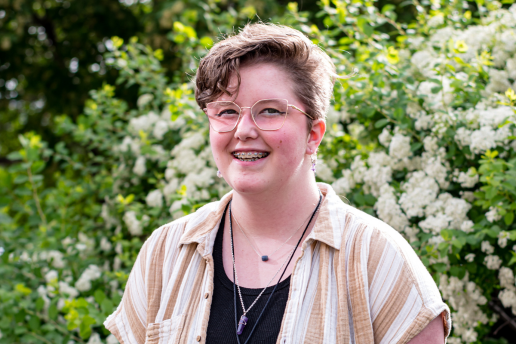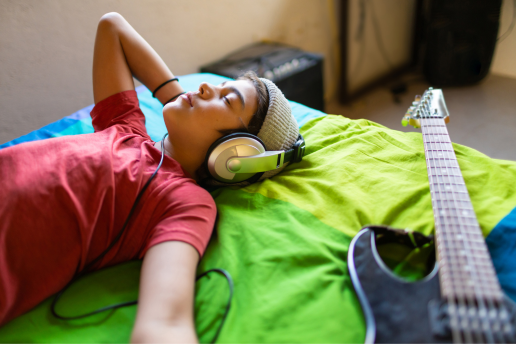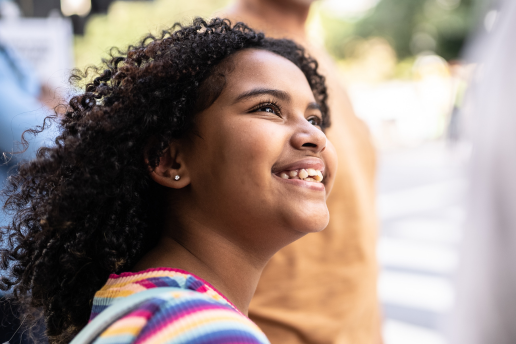It is estimated that over 30% of kids in foster care identify as LGBTQ+. This statistic represents many young people with unique experiences and resulting needs for care and nurture. LGBTQ+ youth tend to linger in care longer. They also move foster placements more frequently than their peers who identify as straight or cisgender. When parenting a child who identifies as LGBTQ+, there are additional layers of awareness and care to support this child and be a safe landing place for them.
A note about language: We are using the acronym LGBTQ+ for this article, and we do so in the most inclusive sense possible for people with diverse sexual orientations, gender identities, and gender expression (SOGIE.) We include the “+” sign to acknowledge the diversity and to recognize those that don’t feel included explicitly in the LGBTQ+ acronym, such as “gender variant” or “gender diverse.”
Welcoming an LGBTQ+ Child
 Every child deserves a safe, loving, warm place to grow up and thrive. Kids who identify as LGBTQ+ still face many harmful myths and stereotypes that leave them feeling unsafe and uncomfortable as they interact with the world around them. As adoptive and foster parents or kinship caregivers, we must provide a safe, welcoming space. Parenting and fostering a child who identifies as LGBTQ+ can be challenging if you have not yet educated yourself about their needs and struggles.
Every child deserves a safe, loving, warm place to grow up and thrive. Kids who identify as LGBTQ+ still face many harmful myths and stereotypes that leave them feeling unsafe and uncomfortable as they interact with the world around them. As adoptive and foster parents or kinship caregivers, we must provide a safe, welcoming space. Parenting and fostering a child who identifies as LGBTQ+ can be challenging if you have not yet educated yourself about their needs and struggles.
The haven we create for them will give them the nurture and confidence they need to navigate the challenges they face. In a recent CreatingaFamily.org podcast, our guest offered these practical tips for parenting a child who identifies as LGBTQ+.
1. Avoid making assumptions about gender identity or sexual orientation.
Refrain from assuming you know how this child identifies when welcoming a child into your family for the first time. Unless their foster files or adoption referral records state how they identify, wait to try to understand their self-descriptions.
2. Consider how to introduce yourself.
Many of us go by names that are different than our given names. You can normalize conversations about naming and identifying by introducing yourself first:
“Hi, I’m Janice. I go by Jan, and I use she/her pronouns.”
Ask their name, what they’d like to be called, and their pronouns. This tells the young person you are open and competent for conversations of identity that may have felt awkward in other homes.
3. Have a zero-tolerance policy.
Make it clear to all members of your home that no one will engage in slurs, jokes, or derogatory stereotypes about gender or sexuality. Be sure to include extended family and friends visiting your home for events or holidays.
Adopting/Fostering a Child Who Identifies as LGBTQ+, a CreatingaFamilyEd.org course
Parenting a Child Who Identifies as LGBTQ+
 Once this young person has joined your home and is settling in, there are several things you can do to continue being a safe, welcoming space for them. Most importantly, maintain a hospitable, welcoming spirit when they return home to you after a day out in a world that might not always feel safe for them.
Once this young person has joined your home and is settling in, there are several things you can do to continue being a safe, welcoming space for them. Most importantly, maintain a hospitable, welcoming spirit when they return home to you after a day out in a world that might not always feel safe for them.
1. Be aware of unsafe spaces.
When parenting a young person who identifies as LGBTQ+, protect their emotional and mental health by not forcing them to attend events (such as religious activities, sports activities, and family gatherings) that are openly hostile or unsupportive of people with diverse sexual orientation or identity. And believe them when they tell you that the place or people feel unsafe or malicious. It will help to educate yourself about the spaces your family frequents.
2. Don’t overprotect.
Allow this young person to participate in activities that interest them, even if you perceive it as stereotypically masculine or feminine. It’s not necessary to try to protect them from potential harassment by “steering” them toward interests seen as more typical for their gender. Instead, teach them to be curious, invest in their activities, and take pride in participating.
3. Continue to use gender-neutral language.
When speaking to your adopted or foster child about friends or romantic interests, try to avoid gender labeling. Keep your language gender-neutral until you are sure of the other person’s identity. For example, instead of, “Do you have a girlfriend?” try asking, “Are you dating anyone?”
When welcoming their friends to your home, introduce yourself first, similar to when your child first came.
4. Support and model self-expression.
 This can be a challenging position for parents of any kid. Keep a light-hearted perspective on some of the crazy (to you) choices your child makes and support their self-expression. Remember, during adolescence, kids are seeking to form their identity. Their choices of clothing, jewelry, hairstyle, friends, and room decoration reflect their unique age, stage, temperament, and identity formation.
This can be a challenging position for parents of any kid. Keep a light-hearted perspective on some of the crazy (to you) choices your child makes and support their self-expression. Remember, during adolescence, kids are seeking to form their identity. Their choices of clothing, jewelry, hairstyle, friends, and room decoration reflect their unique age, stage, temperament, and identity formation.
Try to form connections between you by sharing some of your adolescent choices – even the cringey ones! Experiment with your own self-expression, even if it initially feels uncomfortable.
5. Celebrate diversity.
Please make a point to acknowledge the beauty of diversity when you see it in the world around you.
Point out LGBTQ+ celebrities and role models who stand up for the LGBTQ+ community. Talk about people who demonstrate bravery in the face of various social stigmas. Provide access to books, movies, and materials that positively represent same-gender relationships.
6. Be an open door.
Be conscious of how to let the youth in your care know you are willing to listen. Tell them you feel comfortable talking about anything. Listen to what they say and how they say it. Frequently check on them and ask about their day – including any challenging moments or confusing experiences. Keep your door open at the end of the day as a signal they are welcome to pop in for a catch-up.
Parenting a Child Exposed to Trauma
7. Be affirming and supportive.
 If a youth in your care discloses their LGBTQ+ identity, respond with affirmation and support.
If a youth in your care discloses their LGBTQ+ identity, respond with affirmation and support.
“Thank you for telling me. How can I support you?”
Remember that many times, when these kids share this identity, they feel safe to do so. Their trust in you is no small thing. You can take that as a sign that you are meeting this child’s needs.
8. Avoid double standards.
Romantic relationships and crushes for any of our adolescents can strike fear in the heart of parents, can’t they? Remember, you must give room and space for a child who identifies as LGBTQ+ to discuss feelings of attraction and engage in age-appropriate romantic relationships, just as you would for youth who do not identify as LGBTQ+.
If you and your partner have not yet discussed how you will handle group dating, couple dating, and other social settings where adolescent relationships must be navigated, have that conversation as soon as possible. Please be careful not to further stigmatize your adopted or foster LGBTQ+ by changing or establishing new rules you wouldn’t have previously considered.
9. Welcome their LGBTQ+ friends or partner.
 Ensure your young person feels safe and welcome at any social events in which your family participates – including community, religious, or family get-togethers. Understand that they likely have not felt safe in many spaces, so get a feel before attending for how the organization or people will welcome your child.
Ensure your young person feels safe and welcome at any social events in which your family participates – including community, religious, or family get-togethers. Understand that they likely have not felt safe in many spaces, so get a feel before attending for how the organization or people will welcome your child.
Additionally, create a warm, inviting space where your young person and their friends feel comfortable, just as you would with kids who don’t identify as LGBTQ+. Provide snacks, drinks, games, and open-hearted conversation that invites them to let their guard down and feel the safety of your welcome. Remember the preciousness of each child who walks through your door, and make sure they know that’s how you see them.
10. Provide connections and role models.
Check into the resources in your community. Connect your young person to the LGBTQ+ organizations, resources, and events near your home. With the child’s permission, consider seeking an LGBTQ+ adult role model if you sense that would support them well.
11. Visually represent your “hate-free zone.”
Consider displaying signs or other symbols telling your child and their friends this is an LGBTQ+-safe environment. You can find ally flags, rainbow stickers, etc., online if you need them. These symbols benefit kids who have difficulty talking about their identity or take a long time to feel safe. These symbols can be reassuring if you don’t know their previous experiences with acceptance or emotional safety.
Welcoming in Word and Deed
LBGTQ+ young people who join your home through adoption or foster care need the love and nurture of a safe, affirming home. When you educate yourself about their needs and intentionally create a hospitable and welcoming space, you tell them that you are present with them to overcome their challenges. You have a unique opportunity to invest in this child’s future by providing safety, support, and critical life skills as they move toward adulthood.
This post was originally published by Creating A Family on May 11, 2023. View the original post here.


